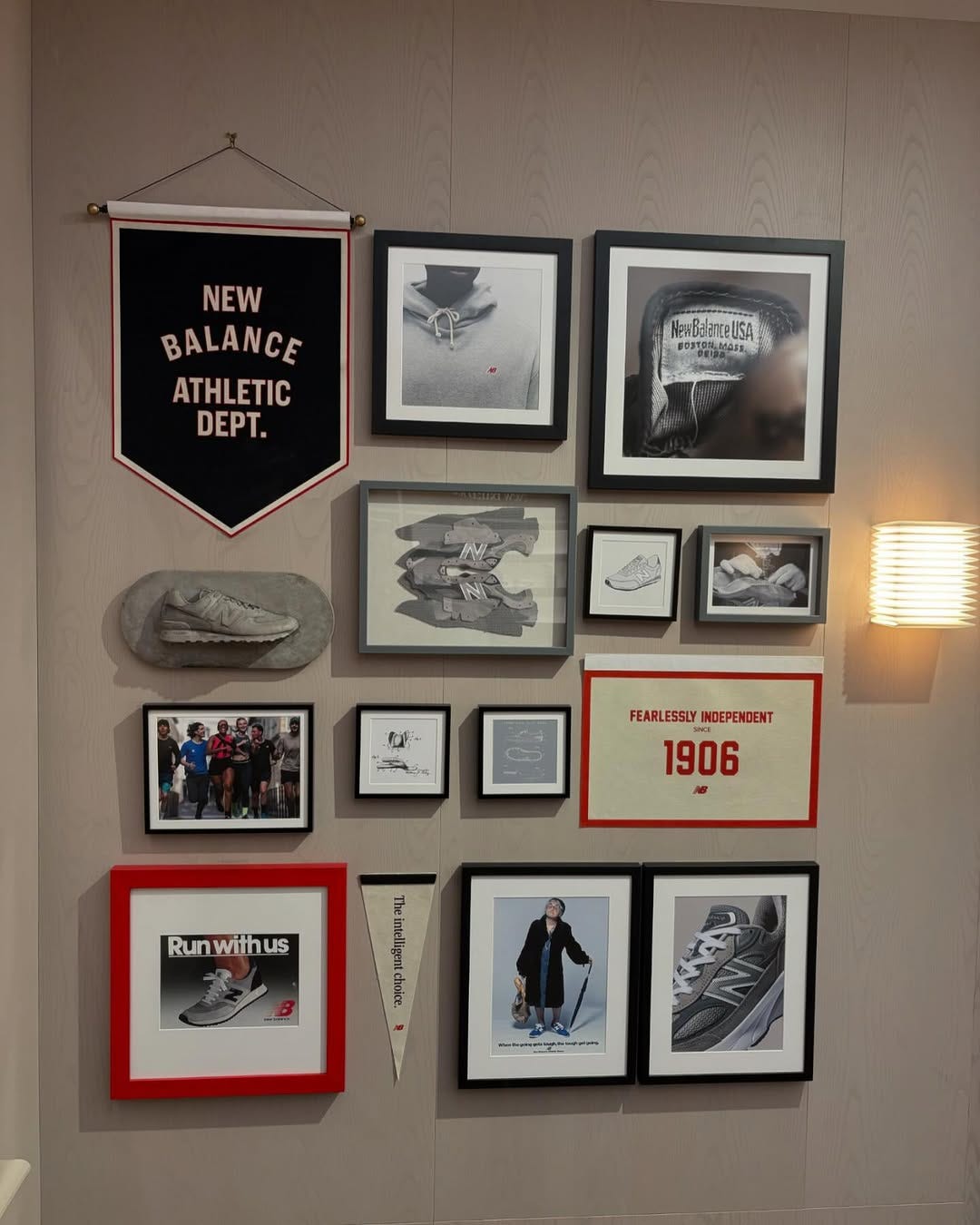New Balance, Gant and the challenge of going back to your roots
Revamps ought to be a moment to try to break out of saturation somehow - even just in that store, just in that moment.
For traditional store-focused retailers, when the moment comes for a revamp, going back to your roots appears to make a lot of sense.
Heritage is the one definite thing that all those pesky D2C newcomers can’t compete on. They might be nimbler, savvier, fresher and funkier - but they do not have history.
And when it comes to selling products, history matters. It tells customers that, in a world where it can feel like products and brands are so disposable, you’re still here - and that has to mean something.
The problem is that everyone else has had exactly the same idea. And in fact, so have most new brands.
Visit an Aime Leon Dore or Kith store, or Harry Styles’ Pleasing pop-ups, and there’s more than a whiff of nostalgia. New brands, just like their young fans, can’t get enough of it.
The result is that stores are opening and re-opening all over the world with essentially the same design strategy.
And beyond putting a serious strain on the world’s supply of mahogany, it all looks strikingly similar - which, surely, wasn’t the plan?
New/old vs old/old
This realisation was triggered by visiting two revamped stores in London this week - Gant on Regent Street and New Balance on Oxford Street.
The intention with both, as with any revamp, is to grab attention. In modern retail, attention is currency, and a store revamp is an opportunity to say to a customer that you’re still here, and you’re still relevant.
What really fascinated me was how different the impact was in each store - and why that might have been.
To the uninitiated, the revamps weren’t that different. Both were focused on reminding customers of their rich history, the products that made them known, and the aesthetics that left their mark on culture.
But there was one pivotal difference: New Balance, mainly through product, mixed old and new. Gant did not.
In effect, it was new/old vs old/old. And unsurprisingly, new/old won.
A new, special edition sneaker made in the UK, positioned within a nostalgic aesthetic, has energy. Yes it points to history, but it points to the future too.
And when every brand everywhere is trying to ride the nostalgia wave, there has to be a point of difference.
Everything was nice in Gant, but also, everything was the same. It was the same, classic product set against a classic, boaty, golf and Pimms look and feel. It will work perfectly for any die-hard Gant fans who don’t want anything to change.
But in the battle for attention, I really can’t imagine anyone else noticing.
A bigger challenge
This isn’t really about Gant or New Balance - what I felt within these individual stores is of no real consequence.
The real point here is about differentiation.
The retail world is saturated, from a product, brand, retailer and store design perspective. There is too much choice, and most of that choice feels remarkably similar.
Revamps ought to be a moment to try to break out of that somehow - even just in that store, just in that moment.
Perhaps it’s because everyone is responding to the same homogenous clues within the culture. Young people appear to be obsessed with the 80s and 90s, so it makes sense to reflect that mood back.
But strategy shifts have to be more creative than that, and frankly, less reactive.
And this by no means is an issue limited to the nostalgia aesthetic. Just look at how most mass market fashion, in an attempt to premiumise and move away from competitors, re-designed in exactly the same way.
It’s all white and steel. A sea of sameness punctuated by beige clothes. In a sense, it isn’t so visually different to your average website - just far more complicated and time-consuming to visit.
This kind of homogeny should be public enemy no.1 when it comes to the retail revamp.
Everyone in retail talks about the need, and opportunity, to develop a deeper, more nuanced understanding of customer behaviour.
But in stores, despite the vague claims of so many big retailers, this hasn’t been cracked - yet.
Join us on June 17th for a free webinar, powered by Valley, and find out what inroads are being made into this challenge.
Places are limited, register here.






